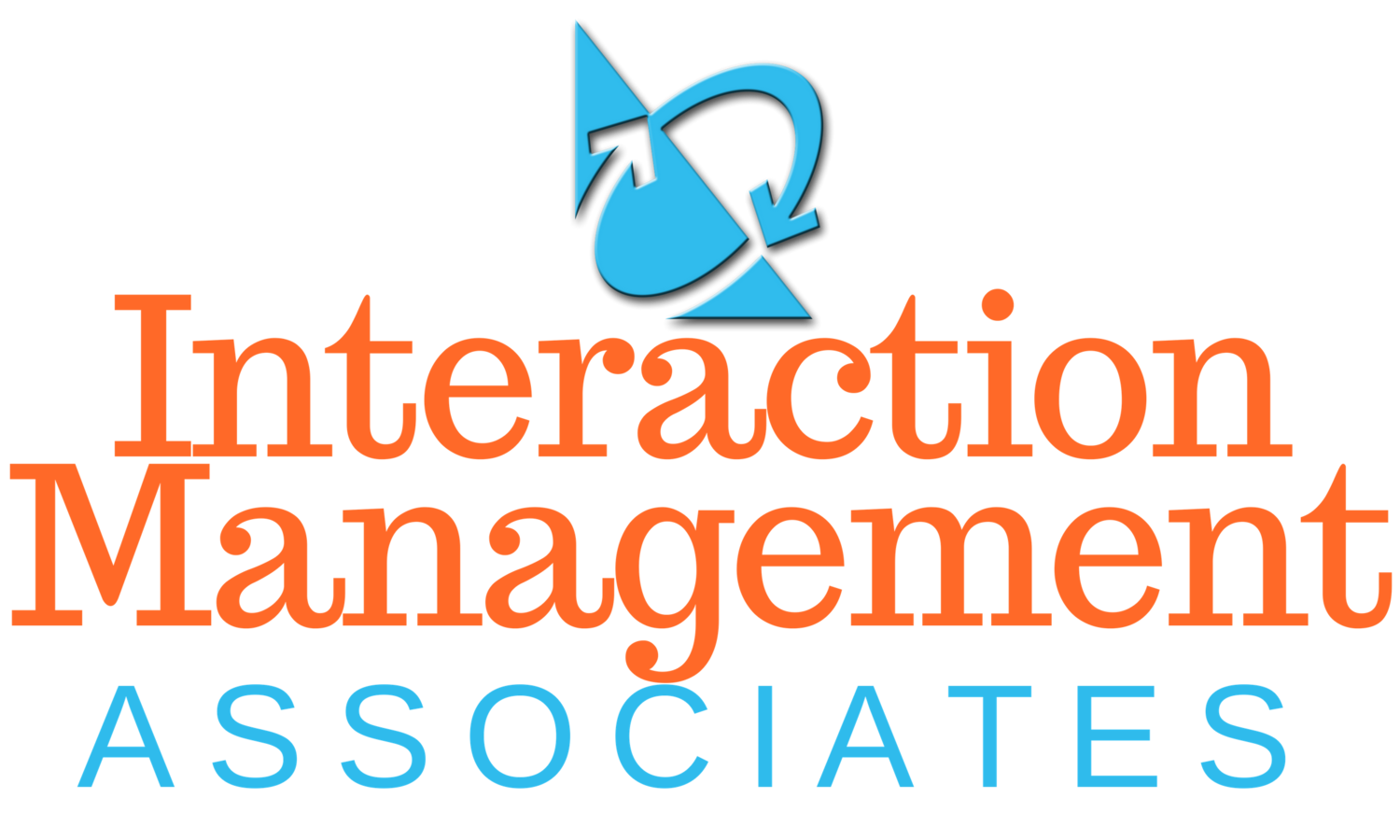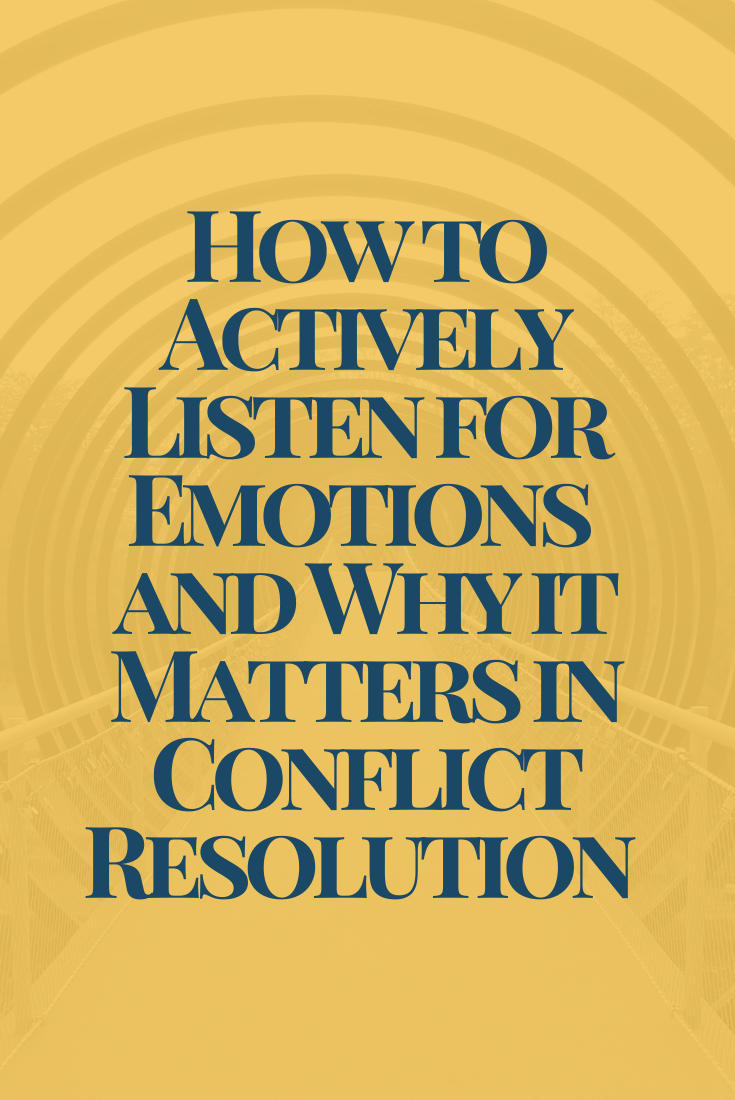When it comes to conflict resolution, active listening is a crucial skill that can make all the difference in working toward agreement. Active listening involves not only hearing what the other person is saying but also paying attention to their emotions. In this article, we will explore the importance of acknowledgment, how to validate feelings, the value of empathy, how to seek clarity, the benefits of summarizing what is expressed. Actively listening for emotions is a powerful way to facilitate conflict resolution.
Benefits of Active Listening for Resolving Conflict
Listening is a genuine gift of respect. It is not always easy to listen to someone with whom you are in conflict, however. When we disagree with someone, we tend to employ all sorts of listening blocks.
Active listening is probably the most essential component of conflict resolution. When done right, it allows individuals to truly hear and understand the other person's perspective.
When people feel heard and understood, they are more likely to be open to finding a resolution that satisfies both parties. Active listening also helps to build trust and rapport between individuals, which is crucial for effective conflict resolution.
In addition, active listening can help individuals to identify the underlying issues that are causing the conflict. By getting to the root causes of the conflict, it becomes easier to focus on the core interests of each party. Once the parties are focused on interests, it is much easier to negotiate and work together to find a solution that satisfies everyone.
Active Listening Basics
How to actively listen in conflict is something discussed in countless previous IMA articles. Here are just a few of those conflict resolution active listening tips we’ve shared over the years:
Offer silence and let the other person speak
Pay attention to how they’re communicating via body language and tone of voice
Jot down your thoughts if you’re tempted to interrupt
Minimize toxic positivity
Avoid making assumptions
Refrain from giving advice
Remove distractions that hinder listening
Don’t derail the conversation
Be aware of your listening filters
Stop rehearsing your response when they’re talking
Don’t become defensive
Recognize when playing devil’s advocate impedes your ability to listen
Don’t use conflict avoidance tactics such as agreeing with everything
Reflect on the underlying emotions of the other person
Listen for their needs and interests
Avoid judging the person or what they’re saying
Tune into your own emotions
Stop making comparisons with the other person
Adopt a “learner” mindset and listen with curiosity
Minimize derailing behaviors that impede your ability to listen
Try reframing or restating what is being said
Listen with a fresh and less subjective perspective
Download our active listening skills checklist
You may be doing all or some of these active listening techniques already. But are you focused on listening to the emotions expressed in conflict?
Listening for Emotions in Conflict
When someone is in conflict, they are likely to be experiencing a range of emotions, including fear, anger, frustration, sadness, or anxiety. People become calmer when they feel heard and understood.
To equip participants in IMA’s training with an easy-to-recall tool, we stress an acronym, AVECS, which stands for acknowledge, validate, clarify, empathize and summarize. This tool, which originates from the Iowa Peace Institute as “the bridges to listening.”
This tool has stuck with me throughout my career, and is outlined below:
Acknowledge
Acknowledgement is a way of letting the person know you hear what they are saying. It is also a soothing balm for raging emotions.
You can acknowledge someone’s emotions in several ways. For starters, sometimes mirroring the emotions can be helpful. An example of acknowledging emotions by mirroring includes:
sighing when someone says how disappointed they are
shrugging when they express confusion
raising eyebrows when they say they’re surprised
shaking your head when they are disappointed about something
nodding when you understand the emotions expressed
It is important to acknowledge emotions in a non-judgmental and objective way. If you don’t understand the emotions expressed, be careful to use these mirroring techniques, because they may feel you are mocking or dismissing them.
Another way to acknowledge the emotions is simply to restate what you hear or see in their body language. Pay close attention to how they are communicating emotions. Say something like, “You are really upset!” or “I can see you are disappointed.”
Validate
Validation takes acknowledgement to the next level, by affirming the legitimacy of someone’s emotions. Through validation, you let them know you can see that their emotions may be warranted, normal or to be expected in the context of the conflict.
You can validate emotions by saying something like, “I can understand that you are upset with my decision to deny your request for a promotion.” Or say something like, “It seems anyone in your position would feel angry.”
By validating someone’s emotions, you recognize their right to feel the way they do. Validation should not be delivered in a judgmental way. It also does not mean you agree with the person. When validating avoid saying something along the lines of, “I know how you feel…” as this can minimize how the other person is experiencing the conflict.
Empathize
Empathy is another critical component of listening for emotions in conflict resolution. Empathy involves putting yourself in the other person's shoes and attempting to see the conflict from their perspective and the emotions they are experiencing.
To demonstrate empathy, you should listen actively and try to understand the other person's perspective of the conflict. More importantly, try to imagine how you would feel in the other person's shoes. Respond in a way that shows you understand and care about the other person's feelings.
While you may feel compelled to make the person feel better by telling them you sympathize with them, but as Brené Brown explains, “Empathy fuels connection, sympathy drives disconnection.” The difference between the two approaches is that empathy requires a bit of vulnerability, to connect with the emotions of the person, or even to admit you don’t know exactly what to say, but you can just tell the other person feels emotional.
When individuals demonstrate empathy, they are more likely to build trust and rapport with the other person, which can lead to a more successful resolution.
Clarify
It’s easy to misinterpret someone’s emotions, and that’s where clarification comes into play. Instead of making assumptions about what you believe someone is feelings, approach the other person with curiosity. First, in a sincere and caring tone, try to describe the person’s body language and words they have used and then ask what they mean to convey. You can let the person know what you believe they are communicating and seek clarity from them. For example, “I noticed you crossed your arms and moved away from the table when I said you would not receive a promotion. I sense that you are disappointed. Is that right?”
While it can be tempting to get someone to see the problem from your perspective, clarification enables you to understand theirs. The source of the emotions may surprise you. Instead of disappointment in the bad news, perhaps they actually expected it, but they are embarrassed about their performance. Or perhaps they are emotional because their poor performance was a result of trauma they do not wish to disclose to you. Or they are feeling scapegoated or blamed for the team’s poor performance.
Instead of guessing, invite the person to clarify what they mean by the emotions they convey. This can help to de-escalate the conflict and create a more productive environment for negotiation and understanding.
Summarize
No matter which of the above active listening skills is used when listening for feelings, summarizing what you believe you have heard can communicate that you are deeply listening.
Summarizing can include active listening techniques such as paraphrasing, reflecting, and restating. Paraphrasing involves repeating what the other person has said in your own words to show that you understand what they told you they are feeling. Reflecting involves mirroring or describing the emotions that the other person is expressing, such as "It sounds like you're feeling really frustrated right now." Restating involves recapping the main points of the conversation to ensure understanding of the emotions the other person is experiencing.
The Power of Active Listening for Emotions in Resolving Conflict
Active listening is a powerful tool for resolving conflict because it allows individuals to truly hear and understand the other person's perspective and emotions. By acknowledging emotions, validating feelings, demonstrating empathy, clarifying assumptions and summarizing what the other person expresses, individuals can create a more productive environment for resolution. In conflicts, listening for emotions -- perhaps even more than listening for facts -- can build trust and rapport with the other person, which can lead to a more successful resolution.
Bottom line, active listening is a critical skill for conflict resolution, and it involves not only hearing what the other person is saying but also paying attention to their emotions and responding in a way that connects with their feelings. By using active listening skills, individuals can de-escalate conflict and create a calmer and more productive environment for resolution.
Whether you are a mediator or simply trying to resolve a conflict with a coworker, neighbor, friend or family member, active listening is a powerful tool that can help you to reach a successful resolution. Join our community of over 300 participants from around the world in IMA courses, who are building their conflict resolution and active listening skills.












